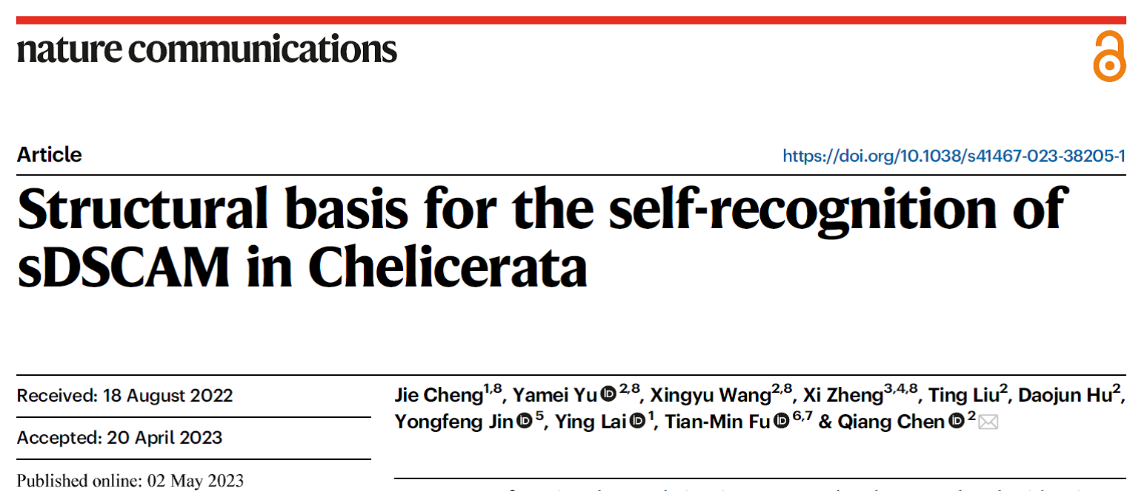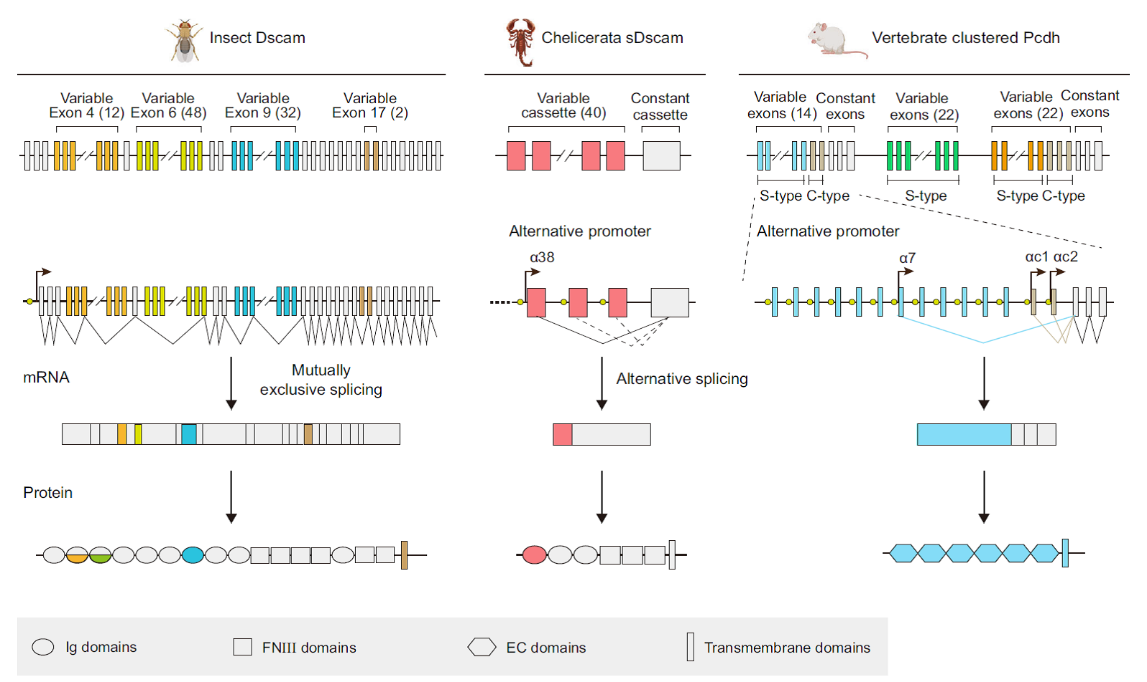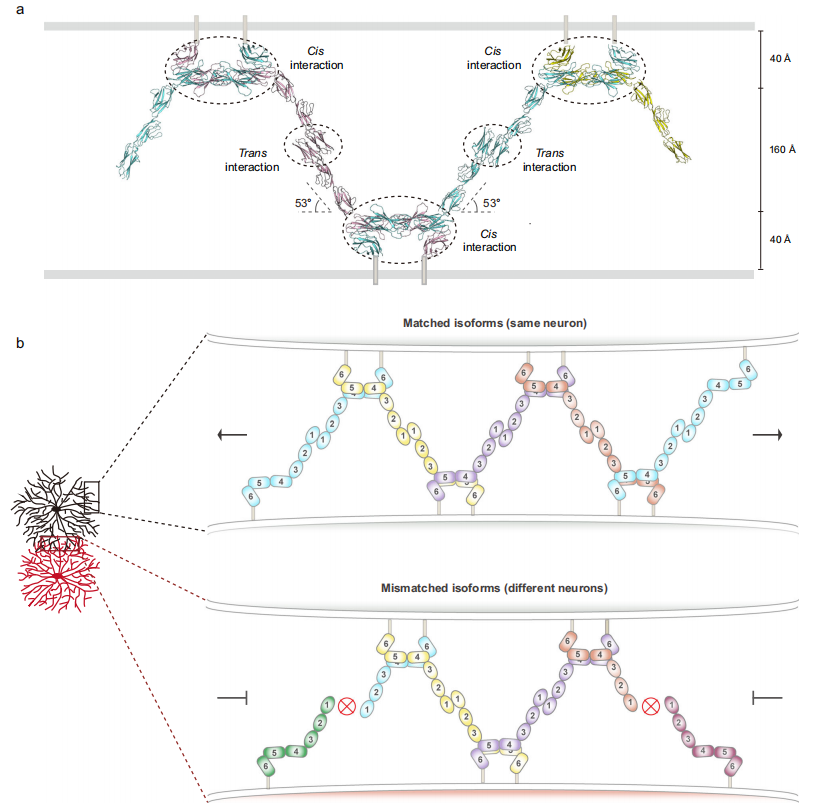Qiang Chen's research team from the State Key Laboratory of Biotherapy and Cancer Center, West China Hospital published a research paper entitled "Structural Basis for the Self-Recognition of sDSCAM in Chelicerata" in Nature Communications on May 2. This study revealed the molecular details of a neuronal surface receptor sDscam (shortened Dscam) found in chelopods that recognizes neurons through trans and cis interactions, suggesting that sDscam may be a missing link in the evolutionary process from insect Dscam to higher mammalian cPcdh, providing a framework for understanding the evolutionary landscape of neural cell surface recognition molecules.

“The complexity of eukaryotic nervous system is established via neuronal cell interactions with vast diversity and specificity. During development, neurons need to discriminate self from non-self to establish appropriate connections. The neuronal wiring and self-avoidance rely on the extraordinary recognition diversity of cell surface molecules, such as the Drosophila Down syndrome cell adhesion molecules (Dscams)1, 2 and the mammalian clustered protocadherins (cPcdhs)3. Drosophila Dscam1 encodes 38,016 distinct isoforms via mutually exclusive RNA splicing1, while human clustered Pcdh generates 52 isoforms using alternative promoters4.--- With high sequence similarities to Drosophila Dscam1 and a striking gene organizational resemblance to the 5′ variable region of vertebrate clustered Pcdhs, Chelicerata sDscam expanded its isoform diversity via a combination of alternative promoter and RNA splicing selections, representing remarkable functional convergence of invertebrate Dscams and vertebrate cPcdhs5.” (Introduction)

Schematic depiction of Dscam, sDscam and cPcdh gene organization and isoform diversity
The number of isomers in the chelated animal sDscam is around 100, between Dscam and cPcdh. In terms of isoforms, sDscam combines the characteristics of Dscam and cPcdh. Therefore, sDscam is considered a "transitional gene" between Dscam and cPcdh, providing a possibility to explain the evolutionary gap between Dscam and cPcdh.

The zipper-like model for sDscam recognition
“--- Recently identified in Chelicerata, a shortened Dscam (sDscam) has been shown to resemble the isoform-generating characters of both Dscam and Pcdh and represent an evolutionary transition. Here we presented the molecular details of sDscam self-recognition via both trans and cis interactions using X-ray crystallographic data and functional assays. Based on our results, we proposed a molecular zipper model for the assemblies of sDscam to mediate cell-cell recognition. In this model, sDscam utilized FNIII domain to form side-by-side interactions with neighboring molecules in the same cell while established hand-in-hand interactions via Ig1 domain with molecules from another cell around. Together, our study provided a framework for understanding the assembly, recognition, and evolution of sDscam.” (Abstract)
This work is another in-depth study of neuronal surface receptors by the team, after their research findings on the self-recognition mechanism of Dscam published in Science Advances in 2016.
Qiang Chen, a research fellow of the State Key Laboratory of Biotherapy, is the corresponding author of this article. Jie Cheng, a postdoctoral fellow of theNational Clinical Research Center for Geriatrics, West China Hospital, Yamei Yu, an associate research fellow of the State Key Laboratory of Biotherapy, Xingyu Wang, a master student (SKLBCC)and Xi Zheng, a deputy chief physician of the Lung Cancer Center,contribute equally as the first author.
https://doi.org/10.1038/s41467-023-38205-1
